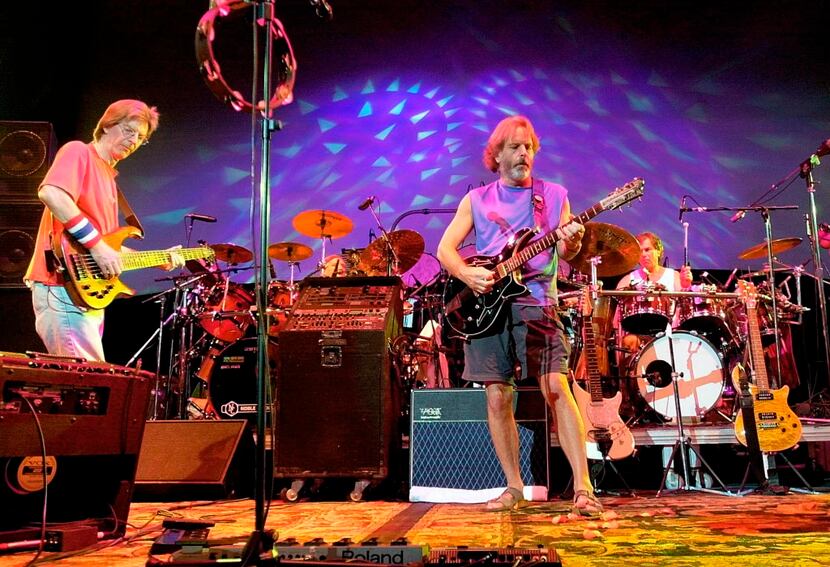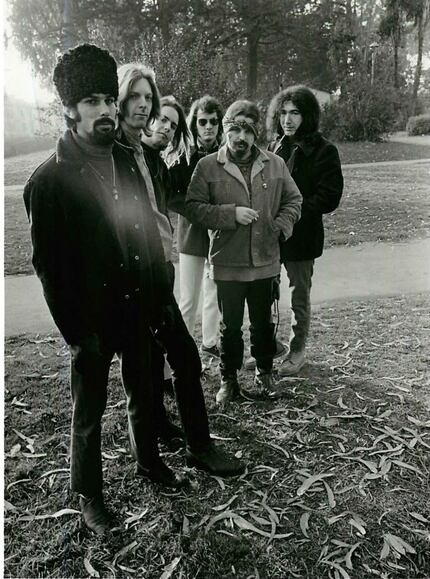The concert draw of the year will unfold over only five nights in two cities this summer. At this point, you'll have to fork over thousands of dollars on the resale market for a ticket to see a band whose leader died 20 years ago. Fare thee well - to your checking account. (You can also catch them for free on YouTube.)
The Grateful Dead minitour, which starts this weekend in Santa Clara, Calif., and stops July 3-5 in Chicago, provokes a range of personal feelings. Many of them carry a nostalgic twinge: As an impressionable 12-year-old in the early '80s I basked in backstage access to Dead shows, which made me pretty cool in the eyes of the friends I was trying to impress. I had a loose family connection: My maternal grandfather married the mother of the late Rock Scully, the band's original manager. I remember sitting on a platform backstage at the Oakland Auditorium, legs dangling, as the round, shaggy form of Jerry Garcia walked toward the stage. Is this really happening? I wondered.
With that indoctrination, it's little surprise I remained a Deadhead through my teen years. Concerts at Berkeley's Greek Theatre became an annual rite. I saw some inspired shows, marked by flurries of improvisation that sent crowds into a hive-mind frenzy of activity resembling dancing. I also saw some tired shows, especially near the end.
And I saw some strange and funny things. One day at the Greek, a high school buddy decided he wanted some psychedelic ingestibles. He got a piece of cardboard and a pen and scrawled "NEED MUSHROOMS." A whistle cut through the air from about 50 feet away. My friend ambled over and acquired his fungus.
Eventually I grew out of the scene, and, as we so often do with parts of our youth, came to resent it, in the same way I came to resent classic rock radio. That was then; give me now, preferably with less patchouli smell.
The buzz surrounding the Fare Thee Well tour has rekindled my memories and interest. I'm not going to any of the shows: Been there, done that, bought the tie-dye. But I did tear through a couple of vastly different new books: David Browne's So Many Roads: The Life and Times of the Grateful Dead (Da Capo, $30) and Deal: My Three Decades of Drumming, Dreams, and Drugs With the Grateful Dead, a memoir by Dead drummer Bill Kreutzmann with Benjy Eisen (St. Martin's, $27.99). I've been hitting the Sirius XM Dead channel hard, and soaking in the new two-disc best-of set just released by the band's current label, Rhino. (I'll take a pass on the $700, 80-disc set. My landlord should appreciate my restraint.)
Browne's book is smartly organized by 17 key dates in the life of the Dead. The Rhino best-of set divides the catalog into two segments: 1967-77 and 1978-89. The combination of readings and listening has allowed me to appreciate the band's history and music as a clear-headed adult. This has been a musical out-of-body experience for a former Deadhead, like hovering above old memories as they're made.

Browne, an editor at Rolling Stone, proves particularly adept at cutting through the Dead bread and circuses to engage the sound. Here, he describes an early performance of the band's improvisatory touchstone "Dark Star": "[Jerry] Garcia's instantly recognizable pierce-the-clouds guitar began slithering its way through the swamp, playing off the introductory motif and looking for a way in. It's as if the players had each joined a conversation at a party but hadn't yet decided what to say."
Conventional wisdom holds that the Dead never performed as well in the studio as they did live, and these books overflow with tales of sludgy recording sessions. In Browne's book, the folk legend Joan Baez recalls visiting the studio for a torturous date in Berkeley in 1984. "I was feeling quieter and duller and weirder by the minute," she says. She turned to the Dead's second drummer, Mickey Hart, and asked: "What's going on?" Hart's response: "You're getting a contact low."
But the Dead actually released some stellar studio work. Their two best albums, Workingman's Dead and American Beauty, arrived the same year, 1970. They teem with vivid storytelling, crisp vocal harmonies, earthy ambience and adventurous Garcia picking, and they contain many Dead hallmarks ("Uncle John's Band," "Casey Jones," "Friend of the Devil," "Ripple," "Sugar Magnolia," "Truckin'").
In his memoir, Kreutzmann calls this the Dead's "Bakersfield era." "We were good ole country boys living in the Wild West," he writes. "A little bit country, a little bit rock 'n' roll ... we held to our psychedelic roots, but, in the studio, we wanted to try our hand at a more steady approach."

Little was steady for the Dead in the years ahead. The quality of their albums dipped through the '70s and '80s, and Garcia's heroin habit escalated. "We had built a foundation on our ability to achieve a group mind," Kreutzmann writes, "but by the early 1990s nobody wanted to listen to anybody else anymore." This was shortly after the band's hit 1987 single "Touch of Grey" introduced the Dead to new legions of fans, and concert gate-crashing became an unwelcome phenomenon. Massive stadium shows were now the rule.
The big gigs, of course, brought in truckloads of money. Some hard-core fans have lambasted the Fare Thee Well tour as a money grab, but in reality, the Dead learned to like the finer things in life years ago.
"We had turned into something we never were," says longtime Dead employee Sue Swanson in So Many Roads. "It was turning into this corporate structure." This was 1975. By 1993, the Dead had become the top-grossing touring act in the world, pulling in over $45 million. In 1994, the gross jumped to $52 million.
The young Deadhead in me feels some pangs of ambivalence about the surviving members trotting out the old stuff with Phish's Trey Anastasio filling in for Jerry on guitar. But I suffer from no delusions that the Dead have only recently grown into a cash cow. This isn't Uncle John's band. This is big business, and it has been for years. And that's fine. That's pop music.
I'm older than I was in those backstage days; so are the Dead. Naiveté fades. That's why I don't begrudge the band earning another payday at the end of their long, strange trip.

